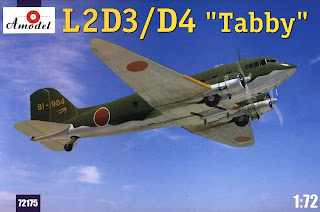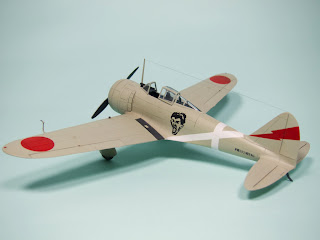Last September this new book on the Kugisho E14Y Glen submarine-borne seaplane was announced and it is now a great pleasure to report that it is available and excellent. The previous work by authors Ryusuke Ishiguro and Tadeusz Januszewski hinted at what might be expected in terms of quality but there is far more here than the title suggests. The large format, softcover book has 128 pages printed on good quality paper and is packed with information and inspiration. The table of contents demonstrates just how comprehensive the coverage is, especially in tracing the fascinating development history of IJN submarine-borne seaplanes and extending well beyond the subject aircraft:-
- Introduction
- First experiments with submarine-borne seaplanes
- Japanese submarine aircraft carrier experiments
- Submarine-installed aviation equipment
- Japanese reconnaissance seaplanes on submarines
- Yokosho 1-Go
- Yokosho 2-Go (E6Y1)
- Watanabe E9W1 (Slim)
- Kugisho E14Y reconnaissance seaplane
- 12-Shi Sen-tei specification for a submarine-based reconnaissance aircraft
- Work on the Otsu-3 project at the Kugisho arsenal
- Competitive Watanabe E14W1 seaplane
- The first E14Y prototypes, flying trials and problems connected with these
- Series production
- The Watanabe Tekkosho company
- E14Y2 development version
- E14Y successors
- Operations
- Epilogue
- Markings on submarine-based seaplanes
- Camouflage and markings of seaplanes E14Y1
- Kugisho E14Y1 Model 11 reconnaissance seaplane technical description
- Submarines equipped with reconnaissance seaplanes
- The E14Y1 "Glen" wrecks of the Akibasan Maru
- Bibliography
Colour profiles by the very accomplished Zygmunt Szeremeta (no less than 25 side views, 11 top and bottom views, one three-quarter illustration and a submarine!) and plans to 1/48th or 1/72nd scales are provided both for Glen and the other seaplane types covered in the book, together with an excellent selection of rare photographs (reproduced to a useful size), maps, plans, diagrams, official drawings and tables. There is also a superb full-page colour cockpit cutaway by Giuseppe Picarella which will be of immense value to super detailers. Of special note is the photograph and colour profile of the Arado Ar 196 in IJN markings, the "stealth" scheme of the US attacker, together with an example of Glen in Indonesian markings. The final section is a collection of poignant colour photographs of the underwater resting place of Glens that never got delivered. There is just so much to inspire and enjoy here. But perhaps best of all for the many IJN seaplane enthusiasts who have to struggle with impenetrable references, the text is all in English!
I have always held Glen to be a charismatic little chap with his crenellated cowling, big tail and sea boots, much overlooked considering his unique operations and exploits far and wide. If I were to imagine an ideal, dream book on the subject then this would surely be it. Indeed it is so inspiring that whilst for me, a predominantly 1/72nd scale modeller, there is no shortage of raw material upon which to base projects, the absence of 1/48th or even 1/32nd scale kits is a great pity. The diminutive but pugnacious submarine-borne warrior cries out for kits in those scales - think of the diorama possibilities. I understand from the author that there are no plans to release a Japanese language edition of the book. That is very much to the loss of Japanese enthusiasts and modellers. A great book, a delight to own and read, and very highly recommended to anyone with an interest in the subject of IJN seaplanes, submarines and their operations. The book is available direct from MMP or specialist aviation book shops.
Without giving anything away, I also understand that we can look forward to a future project from this duo of authors on another fascinating Japanese aviation subject.
With thanks, appreciation and congratulations to Ryusuke, Tadeusz and Zygmunt.
Image credits: Book cover © 2012 MMP Books courtesy of Ryusuke Ishiguro


















